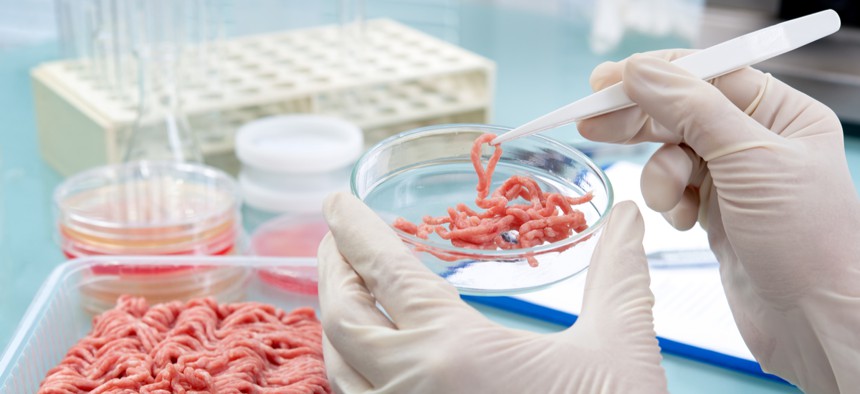Biosensor Warns About Salmonella Before Food Hits Stores

Alexander Raths/Shutterstock.com
The sensor is a rapid way for producers to know if raw and ready-to-eat food is safe.
New technology could give retailers and regulators an earlier warning of food dangers like salmonella, improving public health and giving consumers peace of mind.
The biosensor provides a rapid way for producers to know if this invisible danger is present in both raw and ready-to-eat food before it reaches the store. Annually, more than 48 million people get sick from foodborne illnesses in America, such as salmonella, according to the Centers for Disease Control and Prevention.
“Current tests used to determine positive cases of salmonella—for instance culturing samples and extracting DNA to detect pathogens—are accurate but may take anywhere from one to five days to produce results,” says Mahmoud Almasri, associate professor of electrical engineering and computer science at the College of Engineering at the University of Missouri. “With this new device, we can produce results in just a few hours.”
In this study, researchers focused on poultry products, such as chicken and turkey. The biosensor uses a specific fluid mixed with the food to detect the presence of bacteria, such as salmonella, along a food production line in both raw and ready-to-eat food. That way, producers can know within a few hours—typically the length of a worker’s shift—if their products are safe to send out for sale to consumers. The researchers believe their device will enhance a food production plant’s operational efficiency and decrease cost.
“Raw and processed food could potentially contain various levels of bacteria,” says Shuping Zhang, professor and director of the Veterinary Medical Diagnostic Laboratory at the MU College of Veterinary Medicine. “Our device will help control and verify that food products are safe for consumers to eat and hopefully decrease the amount of food recalls that happen.”
Researchers says the next step would be testing the biosensor in a commercial setting. Almasri says he believes people in the food processing industry would welcome this device to help make food safer.
The study appears in PLOS ONE.
Additional coauthors came from the University of Missouri and Lincoln University. Funding for the work came from the University of Missouri, the Coulter Foundation, and the US Department of Agriculture. The content is solely the responsibility of the authors and does not necessarily represent the official views of the funding agencies.





